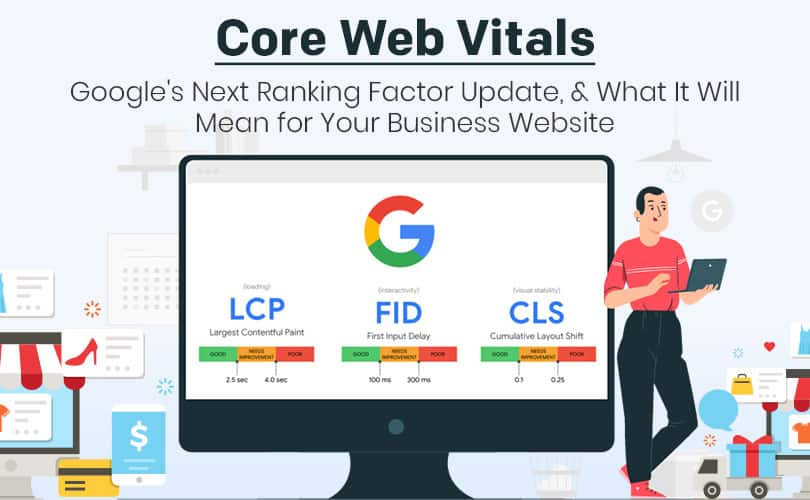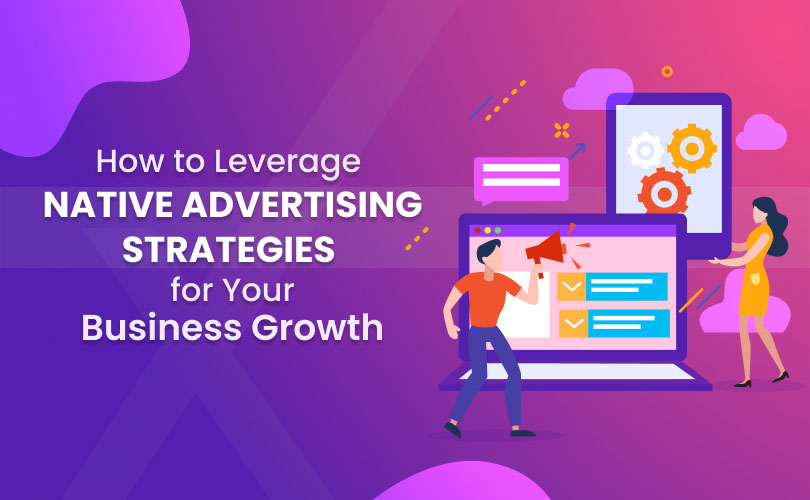Core Web Vitals: Google’s Next Ranking Factor Update, & What It Will Mean for Your Business Website

Google makes lots of small tweaks to its search algorithms all the time, most of which go unannounced to the general public. On occasion, Google will announce a major ranking factor change it’s about to make, and they’ve recently made just such an announcement. The Core Web Vitals update is coming in 2021, and it will definitely have an impact on Search Engine Results Pages (often abbreviated as SERPs). Whenever Google officially announces an update like this, business owners, webmasters, and digital marketers are wise to pay attention and take note. The more one is able to uncover about the particular nature of a Google update, the more proactive measures you can take to get your website ready (and ahead of the curve!) before the update goes live.
The Big Question – What are Core Web Vitals?
The first question we should address is what Core Web Vitals actually are. These are a set of specific factors that Google considers to be important in terms of a user’s overall “real world” experience with your webpage. Core Web Vitals have to do with three specific measurements around page speed and user interaction. These measurements take into account how fast the page loads, its interactivity response time, and how quickly a page becomes stable. In other words, these “core” vitals help to assess what a user’s experience is like when accessing and interacting with your website.
Thus, the Core Web Vitals will contribute to Google’s overall “page experience” score for your webpage – essentially a way for Google to measure & assess the UX of your page. In addition to these core vitals, other web vitals that Google considers include mobile friendliness, browsing safety, HTTPS, and limiting the intrusion of interstitials (like annoying pop-ups).
Core Web Vitals aren’t really about the page’s content. Having quality content on your page is still incredibly important for engaging users, as well as for helping your page to rank! But Core Web Vitals aren’t meant to measure the quality of content; they’re designed to help assess the user experience from a standpoint of page speed, interactivity, and stability, both for desktop browers as well as mobile browsers.
Top 3 Metrics for Evaluating User Experience
When will the Core Web Vitals update go live? Google didn’t share a specific launch date, but did promise to give us a 6-month notice to get ready. Based on current information, we can expect the update to launch in early 2021. Let’s now look at the three main factors of Core Web Vitals in a bit more detail.
1. Largest Contentful Paint (LCP)
Largest Contentful Paint is a mouthful. It actually sounds like something that would make a great band name! Simply put, LCP is about the speed of the page. The faster the page loads, the higher the LCP score. This is based around the render time of the largest video, image, text on the page – in other words, its largest piece of content. How fast it actually loads can be influenced by a number of factors, including your server time, CSS, JavaScript, and client-side rendering.
2. Cumulative Layout Shift (CLS)
Cumulative Layout Shift is really the measure of how stable a page is as it loads. This is also described as “visual stability.” Have you ever noticed the key elements of a page to move around while the page is loading? That’s what could be described as a high CLS, which is something that Google is measuring – and also something you really need to avoid. Rather, you want your page elements to remain fairly stable while the page loads. This makes it easier for users to navigate your page, and also helps prevent them from clicking on something by mistake. Some tips for minimizing CLS include using set size attributes for embedded media, making sure your ad elements have reserved spaces, and adding any new UI elements below the page fold.
3. First Input Delay (FID)
First Input Delay (FID) measures the time it takes for a user to be able to actually interact with your page. You’ve probably encountered a web page which looks fully loaded, but whose buttons aren’t actually clickable yet. That can be a frustrating experience for users, and this is exactly what the FID metric seeks to track. It could be said that FID measures the gap between the First Contentful Paint (FCP) and the time it takes for your webpage to become truly interactive for users. In order to make Google (and your users) happy, you really want to minimize that time gap as much as possible.
Core Web Vitals Measuring Tools
Here are a few tools you can use to help measure the Core Web Vitals of your webpage on your own:
- Google Search Console
- PageSpeed Insights
- Lighthouse
- Chrome User Experience Report
- Chrome DevTools
Core Web Vitals for Business Websites & eCommerce Platforms
Optimizing the UI/UX of your site is one of the most critical things you should do to make your website or online business more successful. Core web vitals look into the user’s first experience with any webpage. If the results show to be more than 2.5s for LCP, more than100ms for FID, or greater than .1 for CLS, both Google and your users will see your site to be quite slow. This will have a negative impact on your organic rankings, and many users who bounce off your site are likely never to return.
A poor page experience will ultimately result in harming your overall brand reputation, as well. This Google update is coming in early 2021, so it’s really high time to optimize your webpage speed and UX – before your competition does.
Bottom line
It’s fair to say that Google’s Core Web Vitals update is currently a hot topic in the worlds of SEO, digital marketing, and user experience. The Core Web Vitals will be integrated deeply into Google’s ranking signals very soon. To prevent any negative impacts on your website and ultimately on your business itself, the time to take action is now!
Not sure how to get started? When it comes to web design, effective UX & UI solutions, SEO success, and great digital marketing strategy, the capable team at Cibirix is well-poised to take care of all your needs. Just give us a shout, and let our skilled experts take care of the rest!
About Author

Richa Mukati
Richa Mukati serves Cibirix as a Brand and Content Strategist, where she’s passionate about how creative concepts and targeted marketing messages can create positive, game-changing images for our business clients among their intended audiences. How does Richa help make this happen? She wields a crisp, compelling business sense that is backed by sharp, strategic thinking which aims for the target of meeting desired market success for our clients. Richa has extensive experience in marketing communication, and clients continue to seek her advice and trust her branding and content strategies which have resulted in measurable results. When not hard at work developing brand and content strategies, Richa enjoys meditating and binge reading.


